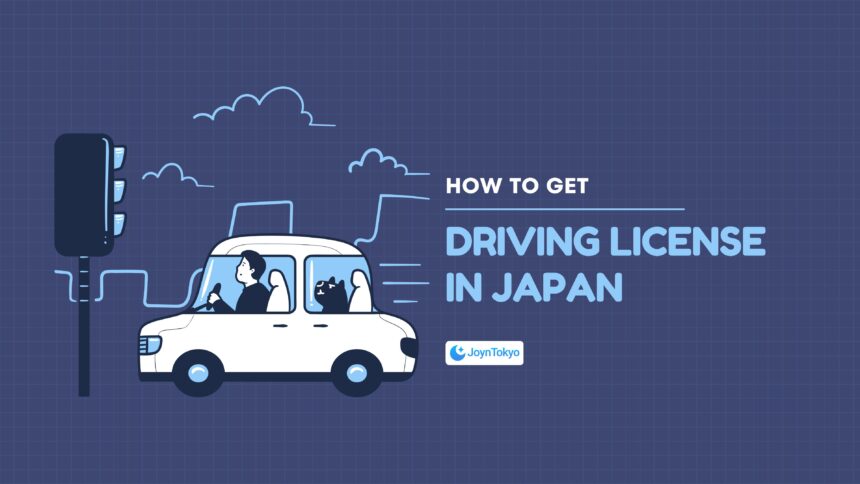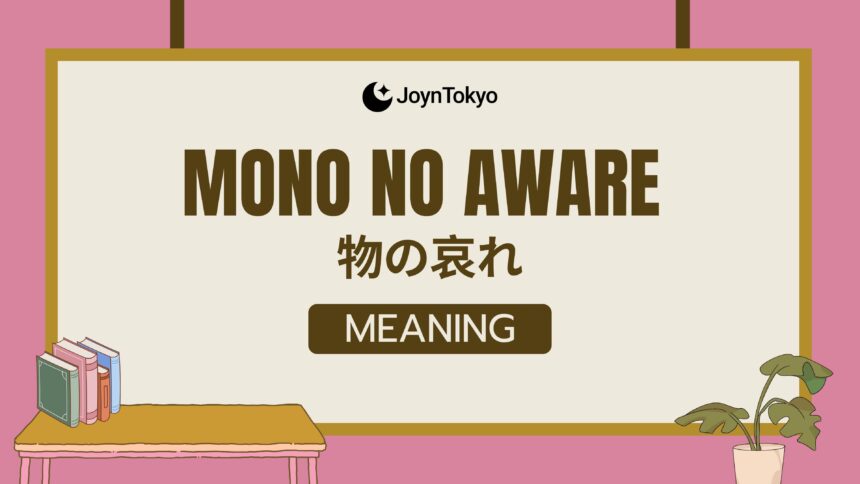Securing the right to drive in Japan can feel like tackling Mount Fuji in slippers. But today, our roadmap breaks the ascent into clear stages so that newcomers can swap confusion for confidence and cruise on Japanese roads.
Snapshot: Your Route at a Glance
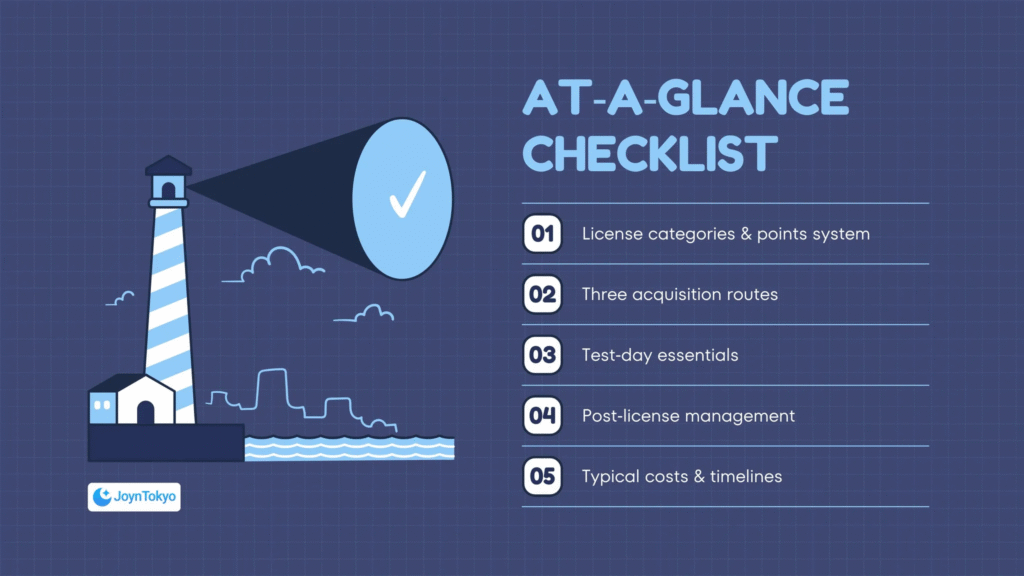
Before we get in gear, here is a compressed overview of what lies ahead.
At‑a‑Glance Checklist
- License categories and points system – how classes and penalties work.
- Three acquisition routes – conversion, driving‑school program or direct exam.
- Test‑day essentials – paperwork, procedure, language support.
- Post‑license management – renewal, loss, address changes, daily rules.
- Typical costs and timelines – what to budget and how long each step takes.
Understanding Japan’s Driving‑License Framework
Japan structures driver education to cultivate gradual, safety‑centered habits. Classes range from mopeds to articulated lorries, each defined by engine size or vehicle weight. Penalties operate under a national point schedule that both rewards spotless behavior and swiftly sanctions risk‑takers.
Licence Categories
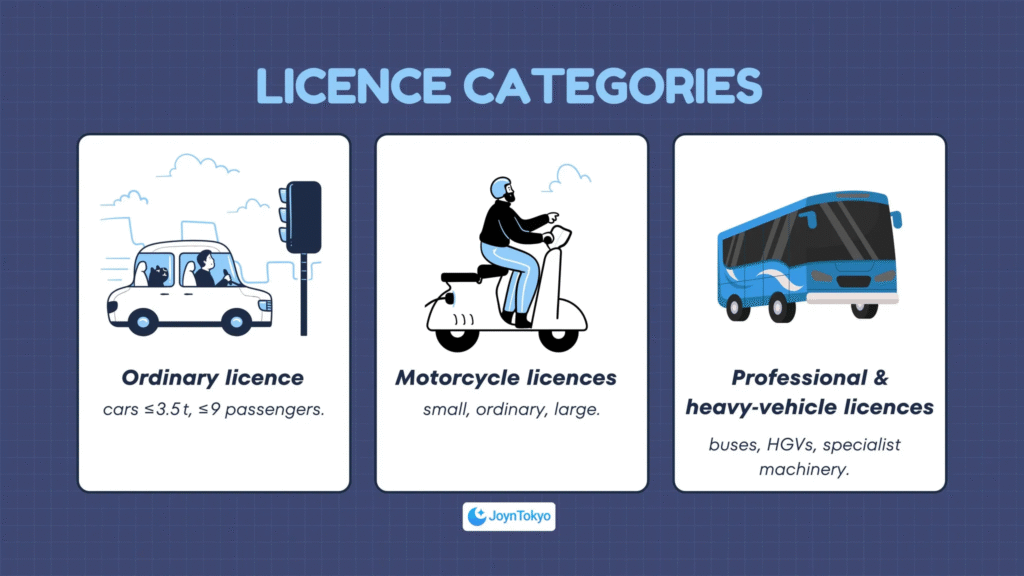
- Ordinary licence (普通免許) – cars of under 3.5 tons, for under nine passengers.
- Motorcycle licences – small, ordinary, large.
- Professional and heavy‑vehicle licences – buses, HGVs, specialist machinery.
Holders may later add endorsements (e.g. automatic‑only to manual, motorcycle add‑on) without repeating the entire curriculum.
Points and Penalties
Infractions add points: 15 km/h over the limit typically means 1–2 points; serious offences far more. Reach 6 points within three years and you sit a cautionary lecture; 15 points triggers suspension. Maintain three point‑free years and the coveted gold license awaits—shorter renewals and lower insurance premiums.^1
International Driving Permits (IDP)
Visitors from most countries may drive for up to one year on a 1949 Geneva‑convention IDP. Belgium, France, Germany, Monaco, Switzerland and Taiwan accept a certified Japanese translation of the home license instead. These documents cannot be renewed in‑country, so plan your license strategy early.
Pathways to Obtain a Japanese Driving License
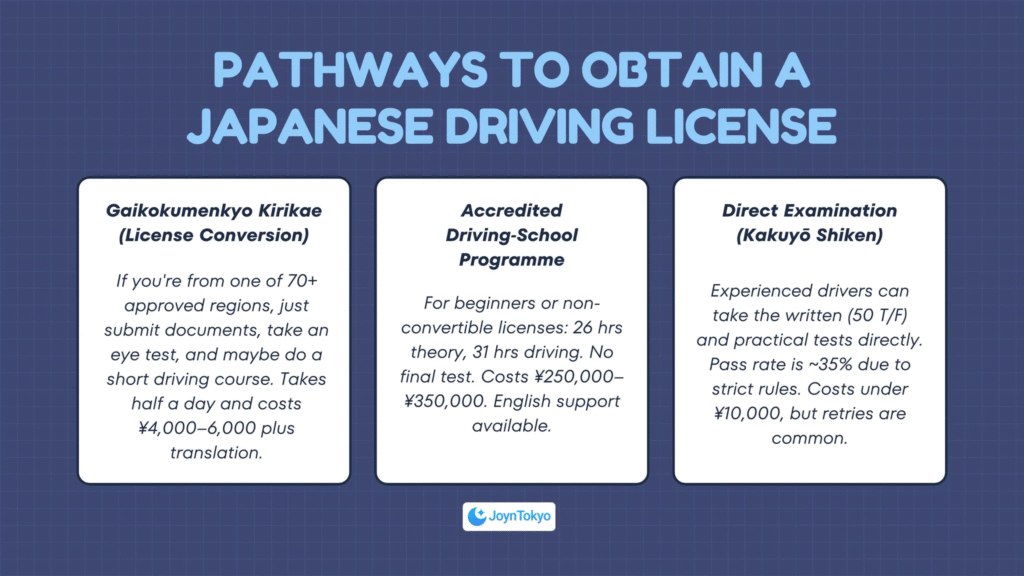
Three routes converge on the same destination — a plastic card issued by the Prefectural Public Safety Commission — but differ in cost, time and difficulty.
Gaikokumenkyo Kirikae (License Conversion)
If your home license hails from one of 70+ recognized jurisdictions, submit paperwork, pass an eye‑test and, in some prefectures, drive a brief closed‑course lap. Time: half a day. Fees: ¥4,000–¥6,000 plus translation.
Accredited Driving‑School Programme
Ideal for beginners or those whose licenses are not convertible. Expect 26 hrs theory + 31 hrs driving across course and public roads. Graduates skip the prefectural practical exam. Cost: ¥250,000–¥350,000, often payable in instalments. Many schools now supply English‑language materials.
Direct Examination (Kakuyō Shiken)
Seasoned drivers may tackle the prefectural written (50 true/false) and practical tests unaided. First‑time pass rates hover around 35% owing to rigorous mirror‑check choreography. Costs stay below ¥10,000, yet multiple attempts are common.
Preparing for the Tests
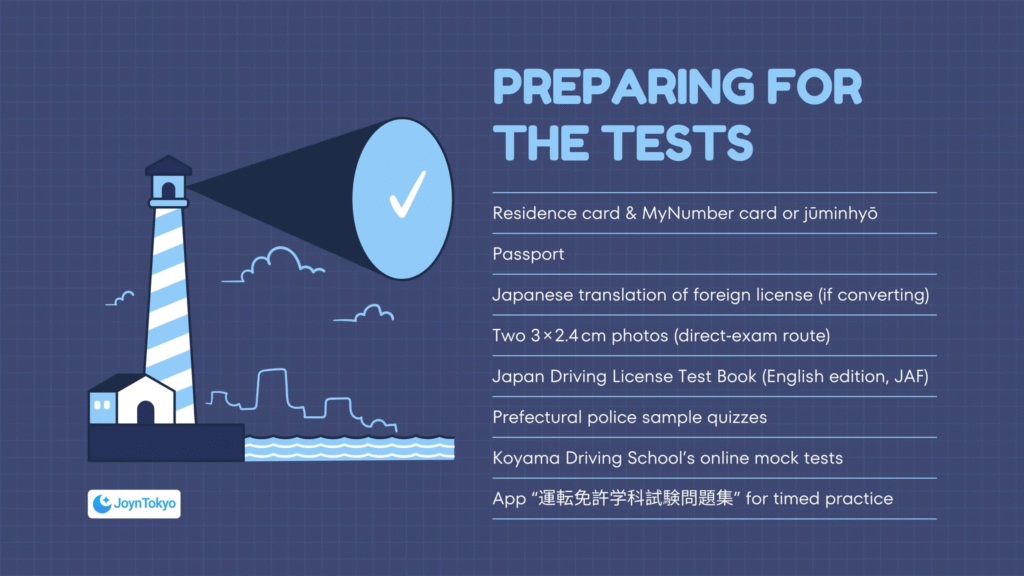
A little admin and targeted study will keep surprises at bay.
Essential Documents
- Residence card and MyNumber card or jūminhyō
- Passport
- Japanese translation of foreign license (if converting)
- Two 3 × 2.4cm photos (direct‑exam route)
Study Resources
- Japan Driving License Test Book (English edition, JAF)
- Prefectural police sample quizzes
- Koyama Driving School’s online mock tests
- The app “運転免許学科試験問題集” for timed practice
Common Theory Traps
Right‑of‑way at railway crossings, school‑zone limits (30km/h unless signed lower) and mandatory child seats (under six) regularly trip candidates. Practice past papers to master the nuance of “safe or unsafe” wording.
On the Day: Navigating Test Centres
Licensing centers open around 08:30. Buy revenue stamps, clear the eye‑test (minimum 0.7 visual acuity) and queue for your slot.
Practical‑Test Tips
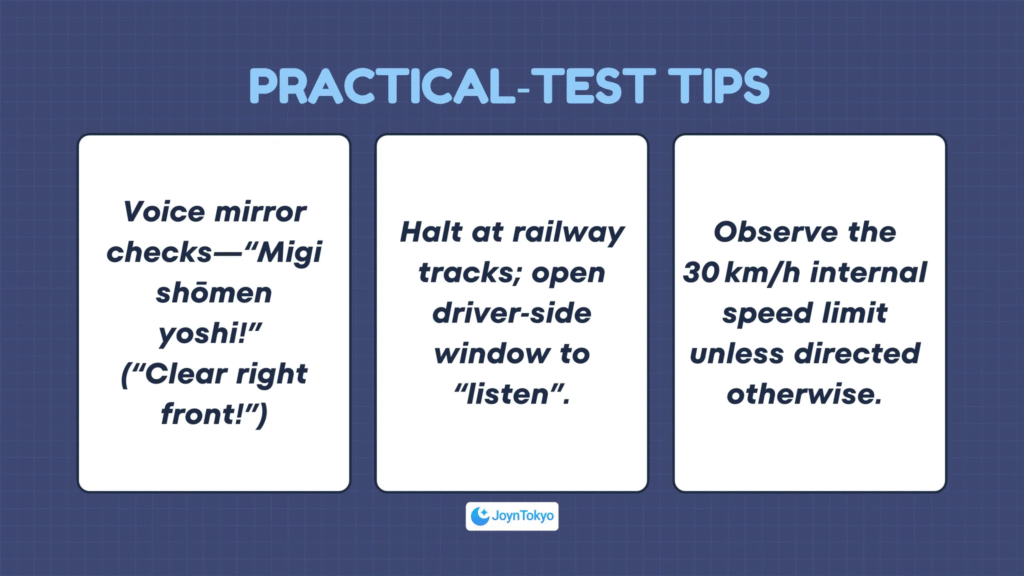
- Voice mirror checks—“Migi shōmen yoshi!” (“Clear right front!”).
- Halt at railway tracks; open driver‑side window to “listen”.
- Observe the 30km/h internal speed limit unless directed otherwise.
Results appear on electronic boards; successful numbers proceed to the photo booth and card issuance.
After You Pass: Managing Your Licence
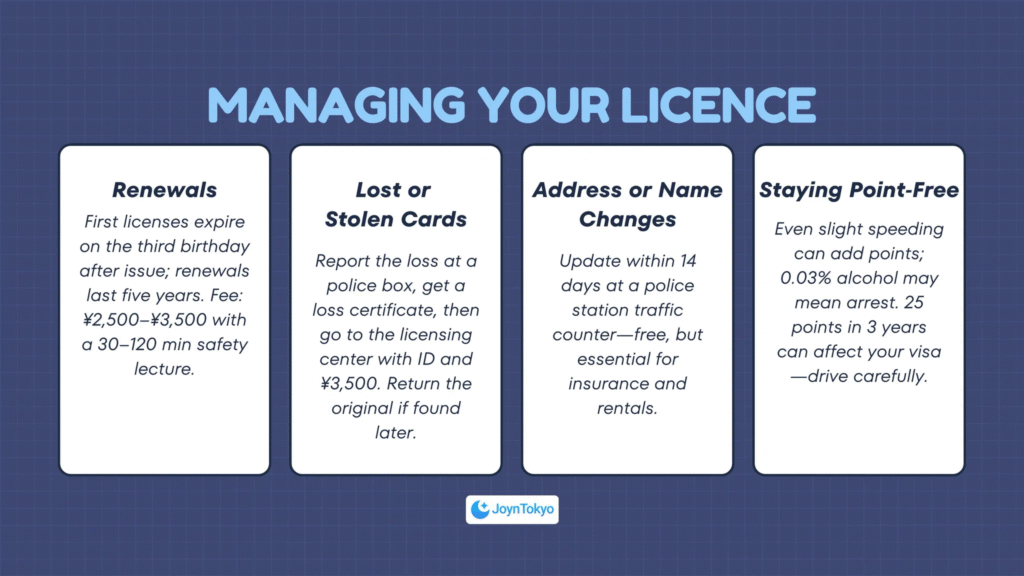
Renewals
First licenses remain valid until the third year after issuance. Subsequent blue or gold licenses last five years. Fee: ¥2,500–¥3,500, including a 30–120min safety lecture.
Lost or Stolen Cards
File a report at any police box (koban), obtain a loss certificate, then visit the licensing centre with ID and ¥3,500. If the original surfaces later, surrender it immediately.
Address or Name Changes
Update within 14 days at a police‑station traffic counter, something which is free, but vital for insurance claims and car‑hire paperwork.
Staying Point‑Free
Even minor speeding can attract points if officially recorded; alcohol at 0.03% breath‑alcohol content may lead to arrest. Foreign residents who accrue 25 points within three years risk visa complications, so err on the side of caution.
Resources to Keep You on the Road
- Japan Automobile Federation (JAF) – translations (¥4,000) and multilingual rules digests.
- English‑friendly schools: Koyama (Tokyo), Fukuoka Driver School, Omura DS (Nagasaki).
- The app “JapanSafeDrive” – in‑car speed‑limit pop‑ups.
Key Takeaways
Choose early between conversion, school or direct examination; gather paperwork; and drill Japan‑specific test etiquette. Once licensed, try not to accrue any points, update your details promptly, and schedule renewals ahead. Mastering these checkpoints will see you move from provisional uncertainty to enjoying Japan’s roads with calm authority.

